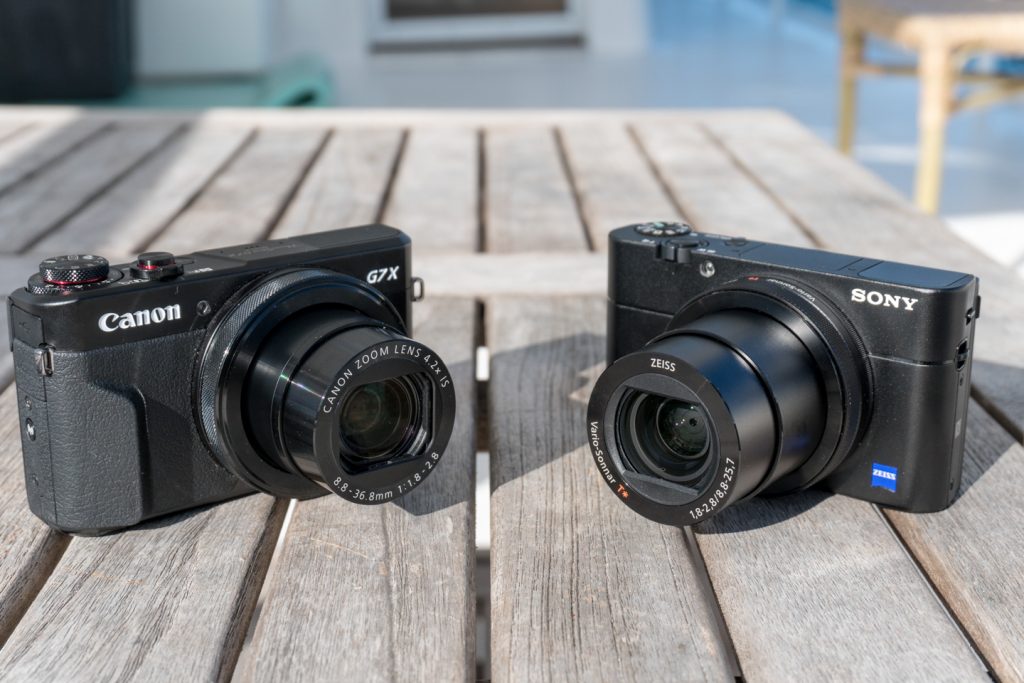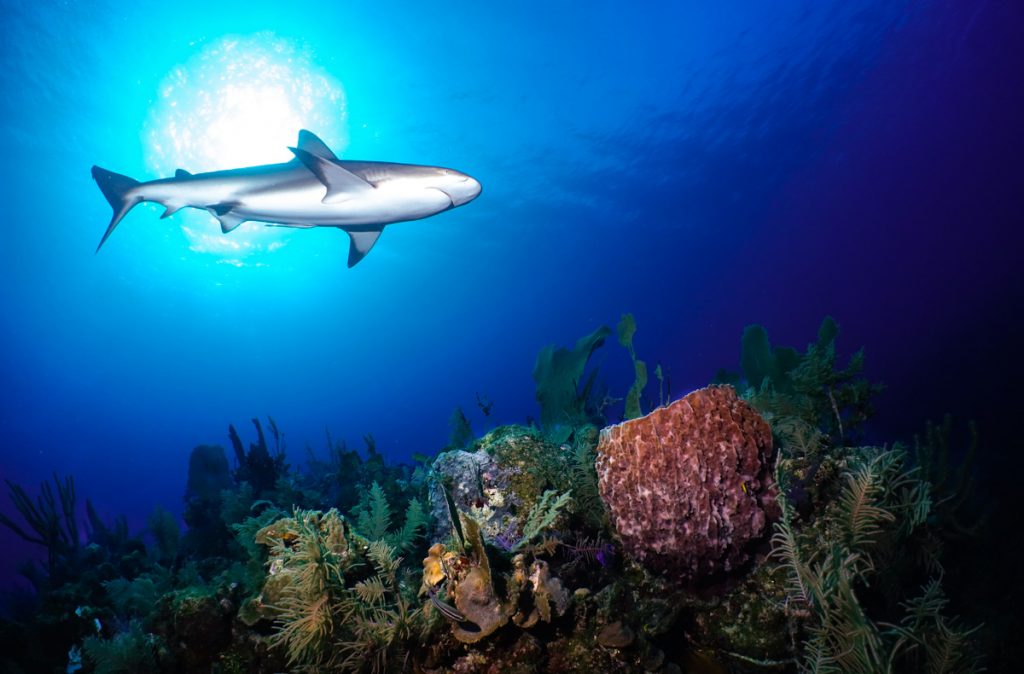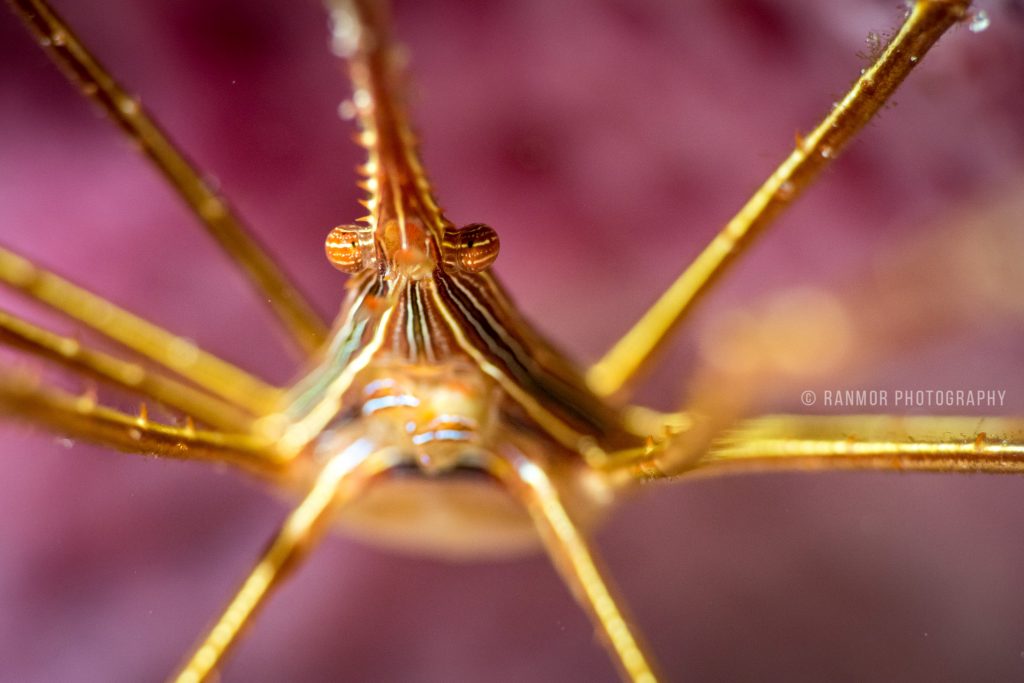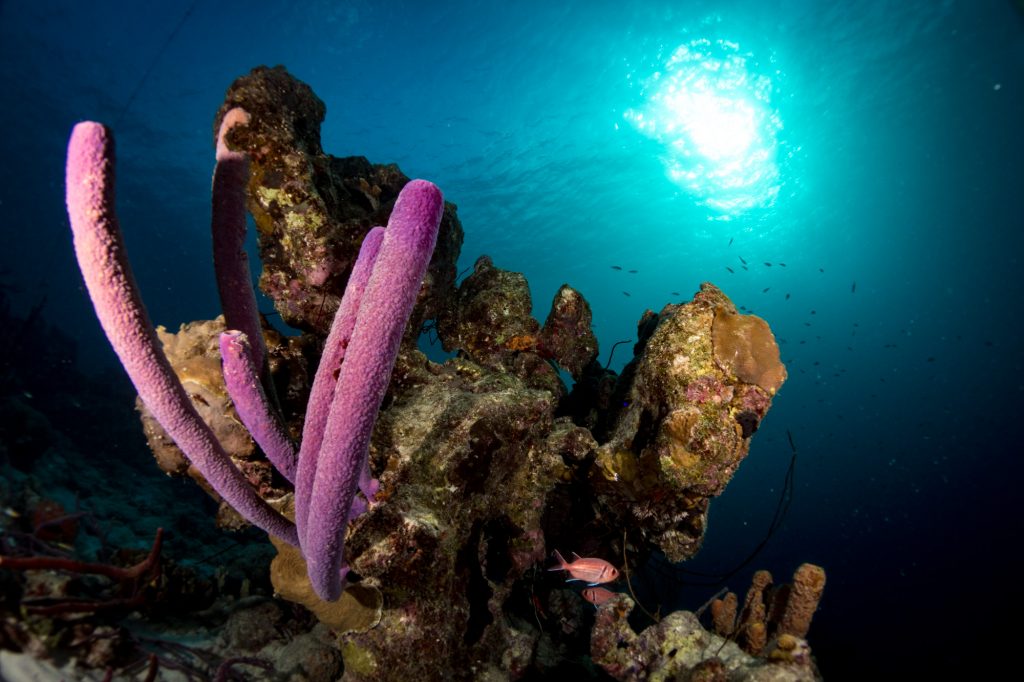

High end compacts are the hottest thing in underwater photography these days. They’re tiny, boast incredible specs, large sensors, sharp optics, loads of features, rapid focusing and overall astonishing quality. What else does an underwater photographer need?
Undoubtedly, the two market leaders currently producing the best compact cameras are Sony, with their legendary RX100 series and Canon, with the rival GXX series. Underwater photographers have officially adopted these tiny and very capable cameras as their favorites, and housing manufacturers are working around the clock to develop the best products to take these cameras underwater, safely and without compromising on functionality.
These days, divers worldwide are mostly discussing two specific models for underwater photography – Sony RX100 Mark V and Canon G7X Mark II.
We took these two popular cameras to the test, to help you decide which one fits your needs.
UPDATE Sep 10, 2019
Several new models have been released since this article was written originally, such as the RX100 VA, VI and VII as well as the Canon G7X Mark III. The RX100 V is no longer available and has been replaced with the RX100 VA instead. We’ve updated the specification chart below accordingly to help you with your decision.
This comparison is still very relevant as the essentials of the cameras have remained similar, but technology has improved. One important change though is Sony’s lens update to a 24-200mm zoom lens, which has been quite a challenge for underwater housing manufacturers. The RX100 VA remains relevant due to the original 24-70mm lens which is easier to attach wide angle wet lenses to. Make sure you take that into consideration when choosing the best model for you.
Check out these brief comparisons between:
A detailed comparison between the newest RX100 VII and Canon G7X Mark III will be released shortly.
The Sony RX100 V
The Sony RX100 V is the latest model in the ultra-successful RX100 series, which brought compacts up to a whole new level. The new Mark V retains the excellent 4K video capabilities, as well as super slow motion at 960fps. The AF system on the RX100 V is worth noting – blazing-fast 0.05-second autofocus, 315 AF points said to be the “world’s most comprehensive phase-detection coverage of its kind”.
Read our full review on the Sony RX100 V here

The Canon G7X Mark II
Canon are slightly behind Sony, which has taken the lead on high-end compact cameras, but they manage to keep up pretty well, offering a more competitive price and better usability, with very user-friendly cameras, easier to use than their Sony rivals.
The Canon G7X Mark II is currently the market leader by Canon. This pocket-sized camera boasts fantastic image quality, delivered by a 20.1MP 1″ CMOS Sensor and a Digic 7 processor. While it lacks 4K video capabilities, compared to the RX100 V, it makes up for it with a longer lens range (x4.2 zoom), more competitive price point and easier interface.
The longer zoom range is regarded highly among macro lovers, who need the most magnification possible with an add-on diopter / macro lens.
Read our full review on the Canon G7X II here

Specification Comparison
| Canon G7X Mark II |
Sony RX100 Mark VA |
|
|---|---|---|
| MSRP (US$) | $649 (as of Sep 2019) | $898 (as of Sep 2019) |
| Sensor / MP | 1.0″ inch (0.52″ x 0.35″) – 20.2MP | 1.0″ inch (0.52″ x 0.35″) – 21MP |
| Lens | 24 – 100mm F1.8 – F2.8 (x4.2 zoom) | 24 – 70mm F1.8 – F2.8 (x2.9 zoom) |
| Max Video Quality | 1920 x 1080p: 59.94 fps, 29.97 fps, 23.98 fps | 3840 x 2160p (4K): 30 fps, 25 fps, 24 fps (proxy video 720p)
1920 x 1080p: 240 fps, 480 fps, 960 fps (Super Slow Motion) |
| ISO | 125-25600 | 80-12800 |
| Max Shutter Speed | 1/2000s | 1/32000s (Electronic Shutter) |
| Screen Resolution | 3.0″ LCD (1,040,000 pixels) | 3.0″ LCD (1,228,800 pixels) |
| Touch Screen | Yes | No |
| Battery Life (CIPA) | 265 | 220 |
| Shoots RAW | Yes | Yes |
| Continuous Shooting | 8 fps in Raw format (up to 30 frames) | 24 fps in raw format (up to 71 frames) |
| Underwater White Balance | Yes | Yes (with firmware update) |
| Minimum Focus Distance | 1.97″ (5 cm) – 1.31′ (40 cm) | 1.97″ (5 cm) – 11.81″ (30 cm) |
| Dimensions | 4.2 x 2.4 x 1.7″ / 105.5 x 60.9 x 42.0 mm | 4.0 x 2.3 x 1.6″ / 101.6 x 58.1 x 41.0 mm |
Underwater Housings
Both the Sony and Canon cameras are very well supported for underwater. All the major manufacturers released excellent housings to support these high-end compacts, so there are plenty to choose from for every budget.
Fantasea
Nauticam
Ikelite
6116.15 Housing for RX100 III / IV / V
6146.08 Standard Housing for G7X II
6245.08 Action Housing for G7X II
Photo samples
Sony RX100 Mark V Underwater photo samples
Canon G7X Mark II Underwater photo samples
Bonus! RX100 VI Sample Photos (Sep 2019)
Taken with the Fantasea FRX100VI Housing + UWL-09F wet wide angle lens.
Usability
Both cameras allow full and easy control over all important settings, usually within a button click away. They both have two dials, to control shutter speed and aperture in manual mode, quick access to WB, ISO, Exposure Compensation, Flash and other crucial settings.
The Canon is overall more intuitive. The menu is easier to understand. It has a touch screen so playing around with it above water feels nicer.
What I like about the Sony, as a photographer who is used to DSLR’s, is that it is FAST. It focuses and fires almost as fast as a DSLR, which is incredible for a compact camera. I sometimes feel like it took the shot even before I pressed the shutter.
Specifically for underwater, there is one annoying issue which I’m not sure why Sony overlooked. When the flash is popped up, you cannot turn it off in any mode other than Auto. That basically means that if you popped it up, you’re stuck with it, making it hard to switch from flash photography to natural light. You can turn off your external strobes of course, but the flash will still go off inside the housing, wasting battery life and slowing down your rapid firing. We’re still hoping for a firmware update to fix that, but no news on that yet.
May 2017 UPDATE: Problem solved! Way to go Sony! The new firmware upgrade fixes the flash issue and adds much needed UW White Balance! More on the update here

Bottom Line
Both of these cameras are amazing. They produce high quality photos and videos and paired with the right lighting and accessories, are easily capable of award winning photos.
Even with just the camera and housing, a diver can snap some incredible photos and create stunning videos.
There is no doubt the Sony RX100 V is the better camera here, which is why the price tag is higher. It has better specs than the Canon, especially when considering video capabilities. I found the Sony to be more responsive, faster to focus and slightly better image quality. The Sony RX100 Mark V is likely the best compact camera produced to date.
That being said, the Canon G7X Mark II gives up quite a fight. The menu and controls are significantly easier to navigate and more intuitive for most, the zoom is longer (x4.2 vs x2.9) which is helpful when shooting skittish subjects, the Underwater White Balance is very helpful, if you don’t like messing around with custom WB and the battery life is longer.
If you are looking for a camera that is easier to use, more affordable, and you plan to mostly shoot photos rather than videos, I would recommend going with the Canon G7X Mark II.
If you are used to a DSLR above water and want to get the closest thing, but in a much smaller size, or if you plan to shoot mostly videos, the Sony RX100 Mark V is the camera for you.
Whichever one you choose to get, make sure you do your research on choosing wet lenses, picking the right strobe and how to set it up correctly before taking your new camera and housing underwater.
If you still need any more advice or have some more specific questions, feel free to contact me at ran@housingcamera.com.
I’m always happy to help!
Dive safe and mind your fins 
RM
The post Sony RX100 V vs Canon G7X Mark II – Battle of the High End Compacts! appeared first on Underwater Cameras Blog by Mozaik.



























